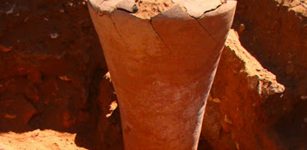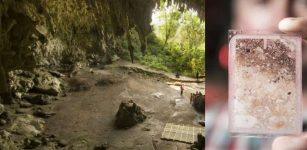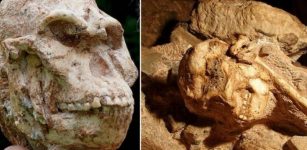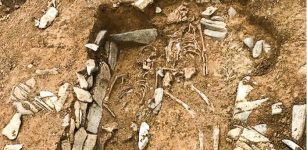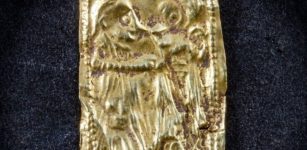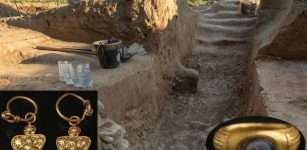Ancient Floridians Re-Buried Their Relatives Due To Rising Seas – New Archaeological Evidence
MessageToEagle.com – Rising seas, washing away an ancient Indian burial ground near Cedar Key, Florida, prompted archaeologists to dig up the remaining graves and collect the bones before the whole thing disappeared into the Gulf of Mexico.
Surprisingly, a team led by Ken Sassaman of the University of Florida found that the the burial ground of some 32 graves was actually a re-burial ground.
The skeletons had been buried somewhere else, then moved to this spot.
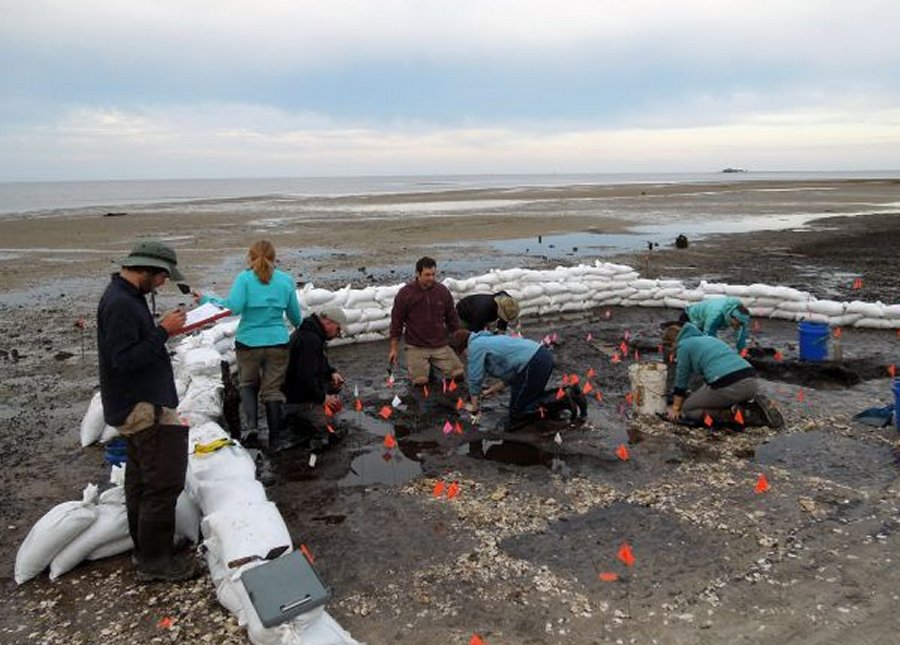
“Florida’s early inhabitants had done that, Sassaman said, because they were dealing with the same problem that’s facing the low-lying Sunshine State now: waves that creep higher and higher, crumbling the coastline and forcing the inhabitants to make tough choices about the future, according to an article in the Tampa Bay Times.
Their solution was to move everything important to them, including their ancestors, he explained.
“They’re digging up their dead that are washing away in the Gulf of Mexico and relocating them to the place they’re going to move to,” he said. “These guys, they never abandoned the coast. They were adaptive.”
Florida’s current inhabitants could learn a lesson from their example, he said.
“There’s a value in looking to the past for our own future,” Sassaman said. “We’ve got a record here of 5,000 years of people dealing with sea level.”
Sea level rise driven by climate change poses a major threat to Florida’s coast. While the sea level fluctuates naturally, it’s been rising faster than the natural rate. The change has been blamed on the warming of the world’s oceans — heating water makes it expand — as well as melting glaciers.
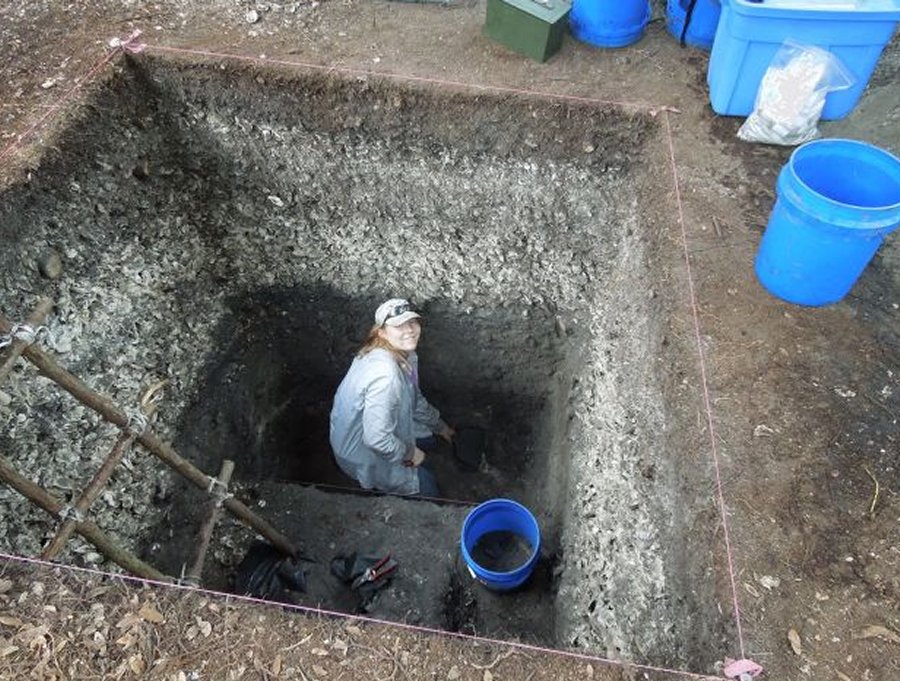
The sea has already risen by about 8 inches since reliable recordkeeping began in 1880. It’s projected to rise another 1 to 4 feet by 2100. The Tampa Bay area has been identified as one of three areas in Florida that are particularly vulnerable to rising seas, with the others being Miami and Apalachicola, according to a national assessment of climate change threats released last year.
Homes, roads, bridges, stores, hospitals, power plants and anything else in Florida that was built close to the water could be inundated by higher waves, particularly during a hurricane’s storm surge. The intrusion of saltwater also threatens to taint the state’s freshwater aquifer.
While some cities and counties have begun planning how best to cope with the higher water pushing inland, state officials have been reluctant to even acknowledge it’s happening.
In 2014, climate scientists met with Gov. Rick Scott — who has professed skepticism about climate change — to try to change his mind. He told them he wanted to hear solutions. They sent him some, and asked for another meeting to talk about them. A year has gone by with no response.
Ignoring the problem was not an option for Florida’s early inhabitants. What Sassaman found is something every archaeologist working along Florida’s coast is dealing with, according to Nancy White, an archaeology professor at the University of South Florida.
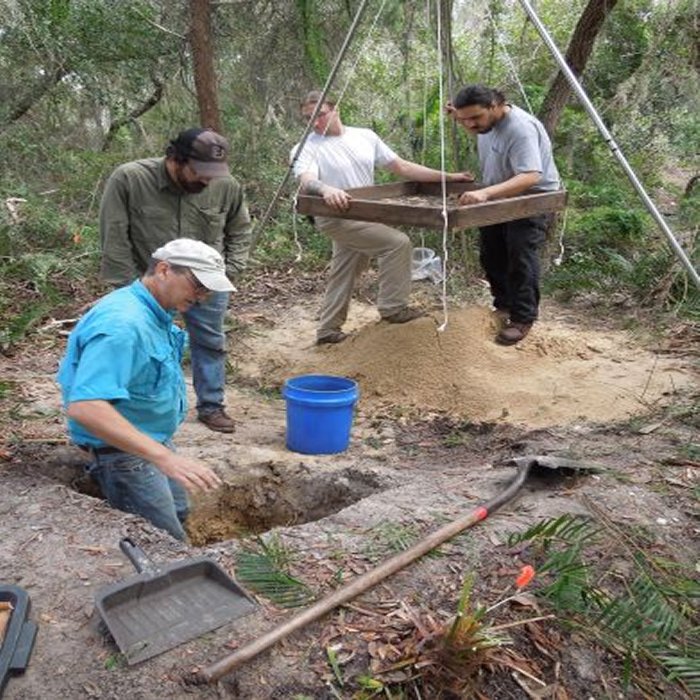
Florida’s coastline has shifted repeatedly over the ages, sometimes dramatically, and the tribes eating fish and oysters and traveling by canoe had to figure out how to deal with it.
“People living on the coast had to move back,” said White, who has been doing her digging on St. Vincent Island in the Panhandle. Then, when the water subsided, “they came back.”
“People made decisions and acted in response to sea-level fluctuations,” said archaeologist William Marquardt, who has spent decades excavating sites along the coast near Fort Myers. He made that conclusion about the Calusa tribe in a paper published last year.
The fluctuations — there were probably at least three, Sassaman said — required more than just decisions about where to live and whether to move burial grounds.
For instance, diets changed. Sassaman and his colleagues, digging in shell mounds in the Lower Suwannee and Cedar Key National Wildlife Refuges, documented a shift from oysters to clams when more freshwater was present as the sea receded.
Sassaman has a theory that goes beyond the mere observation of people moving their homes and everything else to avoid losing it to the rising water.
The ancient inhabitants of what’s now called the Nature Coast used shells to build mounds, ridges and rings around their villages. He believes those were used to tell future generations about the rising seas and what to do about it. They even calculated the rate of change in the sea and anticipated how far landward the water would go, he said.
Thanks to those structures, the villagers were ready for the inevitable.
“They came back and used the places their predecessors used,” Sassaman said.
Sassaman acknowledged he’s reading a lot into what’s left of that long-ago civilization, one that’s such a mystery that it doesn’t even have a name.
“Archaeology is like a 1,000-piece puzzle for which you have 74 pieces,” he said. “The rest you have to extrapolate.”
MessageToEagle.com
source: Tampa Bay Times.

